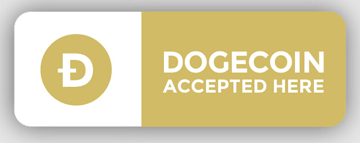I have been listening to all the news about silicon
valley bank closing and this brought up a lot of
questions for me.
What is debt monetization?
What is fractional reserve banking?
How do the fed and banks leverage this?
How is inflation relevant to this?
What is the difference between printing money and quantitative easing?
How does the government make money?
What is the federal reserve bank?
How does this affect the housing market bubble?
What is a soft landing in economics? (1994)
What is the triangle of doom?
What countries are creating their reserve currency?
What happened in 1971 regarding default and gold?
In today's article, we will cover what I have learned about these topics.
Debt monetization is a process in which a government prints money to pay off its debt obligations. This is done by the Federal Reserve Bank, which is not a traditional bank but rather a government-sponsored entity that is responsible for controlling the money supply and setting interest rates in the United States.
Fractional reserve banking is an unethical and dangerous practice that allows banks to lend out more money than they actually have in their reserves. This irresponsible and deceptive system creates an artificial increase in the money supply, which can lead to inflation and other economic instability. It is a system that rewards the banks and punishes the public.
The Federal Reserve Bank can create money through a process called quantitative easing, which is a form of debt monetization. Inflation is a factor in debt monetization, as it can lead to a devaluation of the currency, making it harder for the government to pay off its debt. Printing money is different from quantitative easing, as printing money is a direct injection of money into the economy, while quantitative easing involves buying government bonds and other financial assets.
The government also makes money through taxes and the sale of bonds. When the government issues bonds, it is essentially borrowing money from the public in exchange for a promise to pay back the debt with interest. This money is then used to fund government operations. The Federal Reserve Bank can also purchase bonds from the government, which is a form of debt monetization. This process can help to stimulate the economy by providing more money for the government to spend.
Debt monetization can also affect the housing market, as it can lead to a housing market bubble. This occurs when the government prints money and uses it to purchase bonds, which increases the money supply and drives up prices in the housing market. A soft landing in economics is when the government can slow the rate of inflation and stabilize the economy without causing a recession.
The Triangle of Doom is a term used to describe the combination of high inflation, high unemployment, and low economic growth. Countries such as China, Russia, and India are creating their reserve currencies, which are currencies that are held as a reserve by other countries and used to back up their currencies.
To my understanding, these are solid reasons why it is important to have diversity within your investment portfolio. "I am not a financial advisor" However I do not think it would hurt to talk to one about emerging markets ETFs, gold, and possibly even investment in land.
Selling real estate is a way to make additional income, but one that I don't hear talked about often is renting out land. Next week I will do an article about renting out farmland. I will talk about some of the pros and cons of doing so and hopefully that may help you determine if renting out farmland in the future is worthwhile for you.








No comments:
Post a Comment